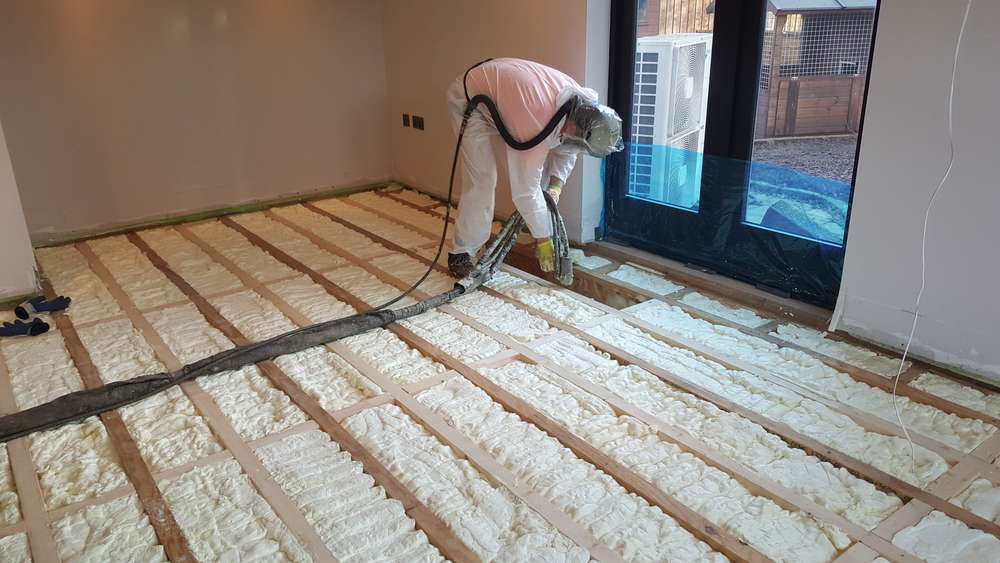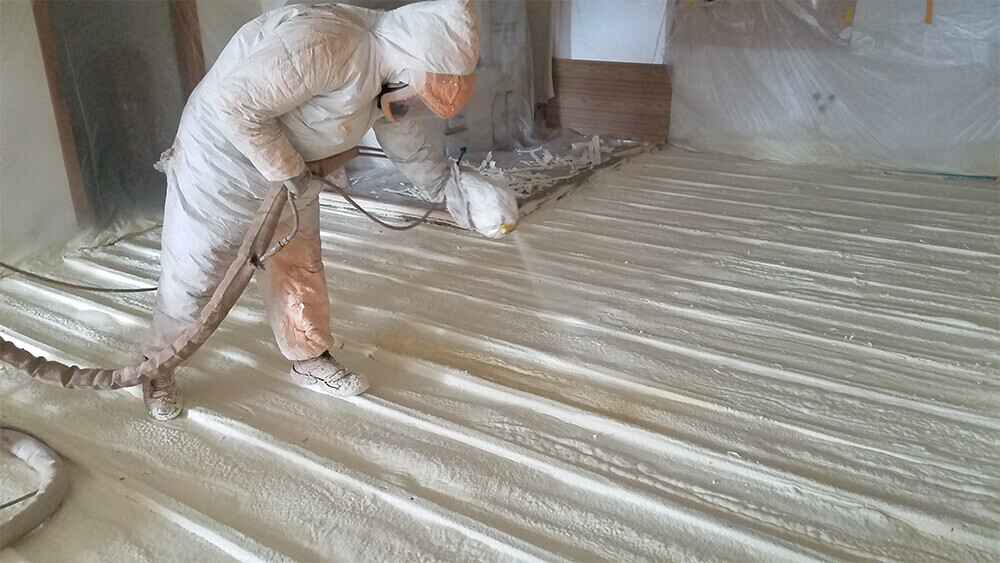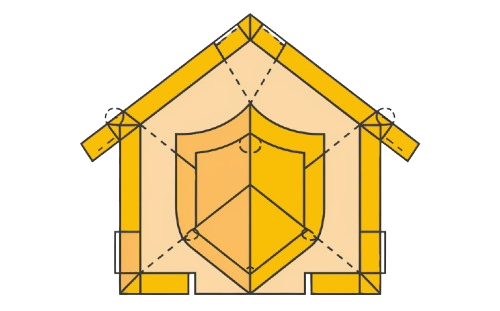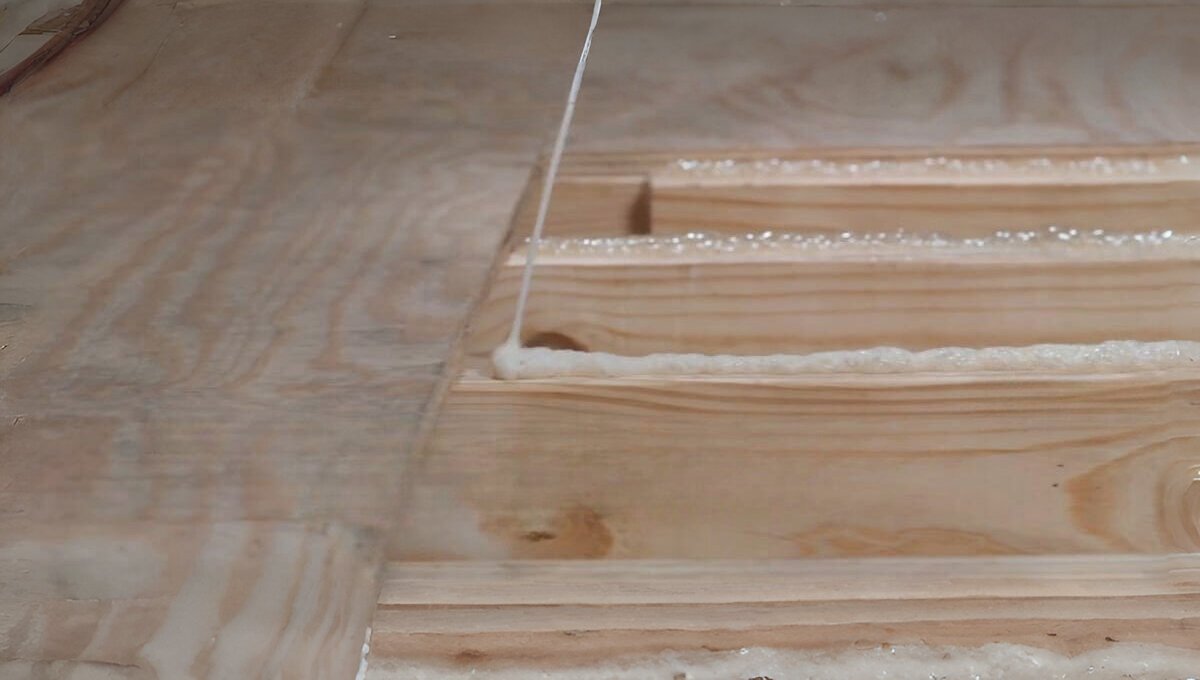Applying spray foam floor insulation is a smart DIY project that can save you a lot of money compared to hiring a professional. Every step in this process matters, and choosing the right materials and following guidelines is essential for the best results. One common question that often arises is whether spray foam is the best option for insulating floors. Yes, it is! Foam insulation works well on various types of flooring, including basements and attics, and helps keep your home comfortable while lowering your energy costs.

The spray foam insulation cost can be expensive upfront, but it’s worth it in the long run. For lower costs, DIY projects are a great way to get started. The key is to find the right product and ensure each step is done properly. You’ll want to insulate the floor carefully, especially if you’re dealing with a basement or attic. The choice of foam depends on the area you’re working on. For floors that are prone to moisture, spray foam offers added protection and durability. There’s no question that it’s a reliable solution for insulating your home, but it’s essential to plan every step and make sure the job is done right the first time to avoid issues later.
Why You Need Spray Foam Floor Insulation
Adding spray foam insulation to your floor is one of the easiest ways to reduce energy loss and create a more comfortable home. I’ve noticed that many people don’t realize how much heat accounts for thermal loss through floors, especially in older homes. Did you know that about 15% of your heating and cooling system’s energy consumption comes from uninsulated floors? By reducing this loss, you’ll see a significant difference in your energy bills without changing your lifestyle.
Spray foam creates a barrier that reduces heat transfer and increases resistance to both heat and cold, helping to keep your home warmer in winter and cooler in summer. This solution maximizes your efficiency, ensuring that the energy you’re already using isn’t wasted. Over time, this small addition to your home will significantly lower your energy usage and make your living space more comfortable. Whether it’s a basement, crawl space, or main floor, using spray foam is a smart investment that pays off by reducing the amount of energy spent on heating and cooling.
The Benefits of Spray Foam Floor Insulation
Spray foam insulation has become one of the most popular ways to improve your home’s energy efficiency over the past few decades. There are many benefits to insulating floors, making it a highly regarded method in both residential and commercial spaces. Unlike traditional methods, spray foam can reduce heat loss and create a more comfortable living environment. It’s one of the best solutions because it adds insulation in areas that are typically hard to reach, such as under floors or in basements. The process is simple, and numerous forms of foam are available to meet different needs.

What makes spray foam insulation stand out is its ability to reduce energy loss while providing long-term savings. By adding insulation, you can make your home more comfortable and reduce the amount of energy needed for heating. This is especially important for buildings with older structures where heat loss is common. Following the right steps, you can ensure that your floor insulation lasts for years, giving you both comfort and cost savings.
Reduce Energy Consumption with Spray Foam Floor Insulation
Spray foam insulation is one of the best ways to reduce energy consumption in your home. It eliminates drafts and reduces heat loss from underfloor areas, which is a big reason why many people choose it. In homes with older HVAC systems, energy usage can be very high because of heat escaping through floors. By adding spray foam, you can keep your home warmer, reduce the amount of energy you use, and save on heating bills. This type of insulation also helps reduce the strain on your system, making your home more efficient and comfortable.
Lower Your Heating and Cooling Bills with Spray Foam Insulation
Adding spray foam insulation to your floors can help reduce the cost of heating and cooling your home. According to the U.S. Department of Energy, almost half of a home’s energy use comes from the HVAC system. By sealing gaps and improving air conditioning, spray foam keeps air inside, which saves energy and lowers your bills. It consumes less foam compared to other methods and can be used to improve cooling efficiency. Over time, this small investment saves money by reducing the need for your system to work harder.
Improved Indoor Air Quality with Spray Foam Insulation
Adding spray foam insulation to your home can significantly improve indoor air quality by sealing gaps that let in unwanted particles like dust and allergens. When you install this type of insulation, it prevents air from escaping and keeps your cooling and heating systems working more efficiently. This improves the overall comfort of your home by reducing the spread of harmful particles and allergens, which can be a problem in homes with older insulation. Spray foam also helps to reduce the amount of air that enters from outside, making your living space cleaner and more comfortable over time.
Cost of Spray Foam Insulation for Floors
The cost of spray foam insulation varies depending on the area you want to cover and the type of foam you use. On average, homeowners would spend between $1 to $1.50 per sq foot for closed-cell foam and around $0.50 to $0.70 for open-cell foam. While hiring a professional to insulate your floors can be costly, a DIY project may help lower the costs. However, it’s important to ensure that every foot of your floor is properly insulated to maximize the benefits throughout the year.
Although the upfront costs may seem high, spray foam outweighs other options when it comes to long-term energy savings. It helps maintain a consistent temperature in your home, reducing heating and cooling expenses. Whether you’re insulating your floor in a basement or an attic, spray foam offers far more durability and protection than traditional materials. The fact is, this method keeps your floors insulated for years, making it a smart investment over time.
A Comparison of Spray Foam and Other Floor Insulation
When comparing spray foam to other types of floor insulation, the benefits become clear. While traditional materials like fiberglass, batts, and cellulose are commonly used, they don’t offer the same level of protection as spray foam. Rigid boards and other options might seem affordable, but they lack durability and flexibility. Spray foam provides more coverage by sealing gaps and cracks, which makes it the preferred choice for homeowners looking to reduce energy loss. Even though foam insulation may seem expensive, it lasts longer and performs better than other types, making it a smarter investment over time.
Better Thermal Performance
When it comes to floor insulation, spray foam stands out for its better thermal performance compared to other methods. The R-value is an important criterion for choosing the right insulation, and spray foam offers the highest value. It prevents heat transfer more effectively, keeping your basements and living spaces comfortable at all times. Because it seals gaps and cracks, it keeps your home warmer in the winter and cooler in the summer, making it the best choice for long-term energy savings. Other materials don’t offer this level of performance.
Versatile Insulation for Every Space
The versatility of spray foam insulation is another reason it’s preferred for different types of floors. Whether you’re using it on wooden floors, concrete, or crawl spaces, spray foam works well in spaces that are hard to reach. It’s easily applied, even in unheated areas like garages or attics. Insulating your walls or floors with spray foam ensures there are no gaps left behind. Other materials like batts or rigid boards can’t achieve this level of coverage.
Long-Lasting Durability for Floor Insulation
The durability of spray foam is what makes it a smart investment. It lasts longer than other types of insulation and offers additional protection against water damage and pests. Once applied, it can last a lifetime, making it a reliable option for maintaining your floor insulation. Spray foam doesn’t just insulate — it provides long-term protection for your home, ensuring your floor stays in great condition from day one.
Step-By-Step Guide to Insulate Your Floors with Spray Foam
Adding spray foam insulation to your floors is a smart way to improve your home’s efficiency and reduce energy costs. Whether you’re planning a DIY project or working with a professional, following each step carefully ensures you get the best results. The process may seem challenging at first, but with the right guide, tools, and preparation, you can successfully insulate your floor and make your home more comfortable. Here’s how you can do it step by step.
Step 1: Preparing Your Floor for Spray Foam Insulation
Before you start applying foam, it’s important to repair any damage or hole in your floor. This helps the insulation stick better and ensures full coverage. Measure the area you want to insulate so you know the amount of FastCoat product you’ll need. Proper preparation makes the entire project easier. If you’re going the DIY route, take your time with the steps to avoid mistakes.
Step 2: Choosing the Right Spray Foam for Your Needs
There are two types of spray foam — open-cell and closed-cell foam. Each has its specific needs and benefits. Choosing the right type is essential for achieving the desired outcome. Closed-cell foam works best for areas prone to moisture, while open-cell foam is ideal for reducing air leaks. Make sure you have the right materials and tools before you start. Using the wrong type of foam can affect your insulation project, so be sure to plan carefully.
Step 3: Tools and Materials You’ll Need for the Project
For a successful spray foam application, you’ll need essential tools like a spraying gun, protective gear, and the FastCoat product. Gather all materials beforehand, including safety items like gloves, goggles, and respirators, to keep yourself safe while working. Having everything needed for the project will make the process smoother and help you avoid delays. Using the right tools also ensures that the foam is applied evenly and covers the entire floor.
Step 4: Applying the Spray Foam Insulation
Start spraying the foam at the corners of the floor and move outwards in sections. Apply foam evenly until the entire floor is covered. Make sure to allow the foam to dry and cure properly after you’ve finished applying it. Curing helps the insulation last longer and keeps the floor protected from drafts, moisture, and heat loss. Taking your time with this step will ensure the best results.
Step 5: Adding Finishing Touches and Maintaining the Floor Over Time
Once the foam has cured, it’s time to add your final flooring materials, like wood or tiles, for a polished look. Keeping your insulated floors in good shape is important for long-term efficiency. Regular maintenance helps keep your floors insulated and reduces the risk of future drafts or damage. Over time, well-maintained insulation will help you save money and keep your home comfortable all year round.
Final Thoughts on Spray Foam Floor Insulation
Spray foam insulation is a smart way to improve your home’s efficiency, reduce energy costs, and maintain comfortable floors all year round. By following the right steps, from preparing your floor to choosing the right type of foam, gathering essential tools, and ensuring proper application, you can achieve long-lasting results. Whether you’re working on a DIY project or hiring a professional, applying spray foam evenly and allowing it to cure properly will help prevent damage, reduce heat loss, and keep your floor well-protected. Regular maintenance ensures your insulated floors stay effective over time, making this investment well worth it.
If you’re looking for trusted professionals to handle your spray foam floor insulation project, we can help you with that. Contact us today, and we’ll match you with the best experts to ensure your floors stay well-protected and energy-efficient over time.
FAQ
Can You Use Spray Foam on Floors?
Yes, you can spray foam on all types of floors. Foam insulation helps insulate floors effectively, making it a great solution for both residential and commercial floors.
How do you spray foam insulation?
What’s the Best Way to Insulate a Floor?
The best way to insulate your floors depends on your home and climate. The Department of Energy recommends using R-11 under floors in warm climates and R-25 in cold climates to ensure comfort and energy efficiency. Following this practical advice will help keep your home warm and reduce energy costs.
What Material is Used to Insulate Floors?
There are various types of insulation materials for floors, including PIR boards, rock wool, and extruded polystyrene. These materials are often used for suspended floors and come in plates or boards, depending on the installation needs. Expanded polystyrene is another popular choice for insulating floors in both homes and commercial spaces.

